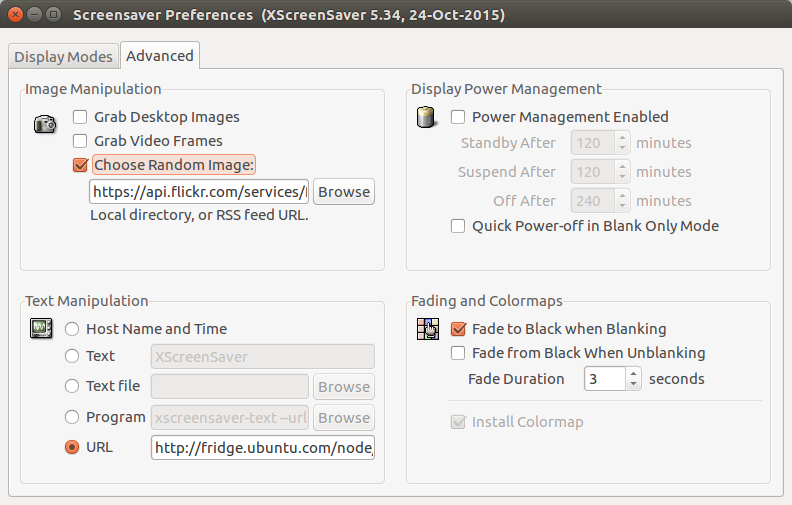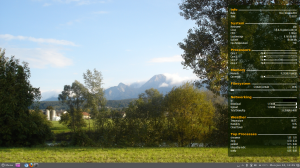Below you will find pages that utilize the taxonomy term “Sysadmin”
Setting up MultiTech LoRaWAN gateway on Ubuntu
As the convener for the Adelaide community of The Things Network, I am frequently setting up Multitech Conduit Gateways. Depending on your PC or notebook hardware you might have some problems with the Exar USB-UART driver on Linux.
Here are the steps to getting this unit setup from an Ubuntu (should work for any other Linux distro) machine.
lsusb
Should show something like this:
Bus 002 Device 006: ID 04e2:1410 Exar Corp. XR21V1410 USB-UART IC
Moving to KVM virtual machines
Installing VirtualBox is getting increasingly painful on Ubuntu due to the problems with UEFI Secure Boot and the VirtualBox kernel modules. Another reason for an alternative is that running VirtualBox VM’s completely in the background is not as straightforward as it could be.
From the available alternatives I looked into (VMWare, Xen & KVM) it was KVM that fitted my needs (casual VM usage with mostly headless VM’s for testing purposes). Main reasons:
Display your Flickr Favourites as Screensaver Slideshow
Install XScreenSaver and remove Gnome default
sudo apt remove gnome-screensaver<br></br>sudo apt install xscreensaver xscreensaver-gl xscreensaver-gl-extra
Run the Screensaver UI and configure
In the “Advanced” section enter your Flickr RSS URL in “Choose Random Image”

https://api.flickr.com/services/feeds/photos_faves.gne?id=YOURFLICKRUSERID #replace with your Flickr User ID
Create a systemd user service to autostart
mkdir -p ~/.config/systemd/user/<br></br>vim ~/.config/systemd/user/xscreensaver.service
Past the following<br></br>[Unit]<br></br>Description=XScreenSaver<br></br>[Service]<br></br>ExecStart=/usr/bin/xscreensaver -nosplash<br></br>[Install]<br></br>WantedBy=default.target
Start and enable systemd user service
systemctl --user enable xscreensaver<br></br>systemctl --user start xscreensaver
ChromeOS - removing SSH known_hosts from Chromebook
One of the things that is not implemented in the Secure Shell Chrome extension is the ability to remove know_host fingerprints which alert you if the fingerprint for a specific IP address has changed.
However there are times when you upgrade a systems and this need to be done.
@@@@@@@@@@@@@@@@@@@@@@@@@@@@@@@@@@@@@@@@@@@@@@@@@@@@@@@@@@@
@ WARNING: REMOTE HOST IDENTIFICATION HAS CHANGED! @
@@@@@@@@@@@@@@@@@@@@@@@@@@@@@@@@@@@@@@@@@@@@@@@@@@@@@@@@@@@
IT IS POSSIBLE THAT SOMEONE IS DOING SOMETHING NASTY!
Someone could be eavesdropping on you right now (man-in-the-middle attack)!
It is also possible that a host key has just been changed.
The fingerprint for the ECDSA key sent by the remote host is
d6:be:12:7e:22:23:c3:e1:56:30:d6:cd:65:b7:ab:42.
Please contact your system administrator.
Add correct host key in /.ssh/known_hosts to get rid of this message.
Offending ECDSA key in /.ssh/known_hosts:7
ECDSA host key for xxxxxxxxxxxxx.yyy.au has changed and you have requested strict checking.
Host key verification failed.
NaCl plugin exited with status code 255.
(R)econnect, (C)hoose another connection, or E(x)it?
Ubuntu 14.04 Webmin Install from PPA
On remote systems sometimes a web-based tool can be very handy. Webmin is such a tool that has been well maintained for decades. To install quickly on a Ubuntu Server without having to manage dependencies and keeping it updated as part of normal OS update operations installing from a PPA Repo is handy.
sudo echo "deb http://download.webmin.com/download/repository sarge contrib" >> /etc/apt/sources.list<br></br>wget -q http://www.webmin.com/jcameron-key.asc -O- | sudo apt-key add -<br></br>sudo apt-get update<br></br>sudo apt-get install webmin
Simple conky system monitor configuration
Just a quick note on install and configuration of Conky.
Installation
sudo apt-get install conky conky-all hddtemp curl lm-sensors<br></br>sudo chmod u+s /usr/sbin/hddtemp<br></br>sudo sensors-detect
vim ~/.conkyrc
This is the content of my config file.
use_xft yes<br></br>xftfont Ubuntu Condensed:size=9<br></br>xftalpha 0.8<br></br>override_utf8_locale yes<br></br>update_interval 5.0<br></br>total_run_times 0<br></br>own_window yes<br></br>own_window_transparent no<br></br>own_window_argb_visual yes<br></br>own_window_argb_value 155<br></br>own_window_colour 081100<br></br>own_window_type normal<br></br>own_window_class conky-lgaggl<br></br>own_window_hints undecorated,below,sticky,skip_taskbar,skip_pager<br></br>#background yes<br></br>#out_to_console no<br></br>double_buffer yes<br></br>#max_user_text 32768<br></br>minimum_size 300<br></br>draw_shades no<br></br>draw_outline no<br></br>draw_borders no<br></br>draw_graph_borders yes<br></br>default_shade_color black<br></br>default_outline_color white<br></br>default_bar_size 150 5<br></br>default_gauge_size 20 20<br></br>imlib_cache_size 0<br></br>draw_shades no<br></br>alignment middle_right<br></br>gap_x 15<br></br>gap_y 15<br></br>border_inner_margin 10<br></br>no_buffers yes<br></br>uppercase no<br></br>cpu_avg_samples 2<br></br>override_utf8_locale no<br></br>default_color ffffff<br></br>color1 ffffff<br></br>color2 cccccc<br></br>color3 000000<br></br>color4 FFAA00
Enabling the watchdog timer on the Raspberry Pi
Turns out that the Broadcom BCM2708 chip on the RPi has a hardware watchdog. This can be very useful if your RPi is located remotely and locks up. However, this would not the preferred method of restarting the unit and in extreme cases this can result in file-system damage that could prevent the RPi from booting. If this occurs regularly you better find the root cause of the problem rather than fight the symptoms.
